We will begin this discussion in a strange place:
Melekiym Ri’shon (First Kings) 5:11 (4:31)
For he was wiser than all men; than Eythan the Ezrachiy, and Heyman, and Kalkol, and Darda, the sons of Machol: and his fame was in all nations round about.
One of the interesting anomalies in scripture is of course the lack of capital letters in the Ivriyt (there are none) – yet, the English interpreters manages to find some in the translation which they regularly use to denote the Proper Noun, i.e., the name of a person, place, or thing.
Here in this verse, we have four of the sons of Zerach identified as “sons of Machol”. Compare if you will this verse above with the verse below:
Divrei Hayamiym Ri’shon (1 Chronicles) 2:3-6
The sons of Yahudah; Er, and Onan, and Shelach: which three were born unto him of the daughter of Shua the Kena`aniyth. And Er, the firstborn of Yahudah, was evil in the sight of Yahuah; and he slew him. 4 And Tamar his daughter in law bore him את eth-Perets and את eth-Zerach. All the sons of Yahudah were five. 5 The sons of Perets; Chetsron, and Chamul. 6 And the sons of Zerach; Zimriy, and Eythan, and Heyman, and Kalkol, and Dara: five of them in all.
We see here a group of names which appear only twice in all scripture, which is quite ironic given the historic consequences of the lives of these sons of Zerach. See the blog post “Primogeniture and the inheritance of the covenant” for further discussion on the lives of Kalkol and Darda.
Yet, here we see one reference telling us that Eythan, Heyman, Kalkol, and Darda, were the sons of Machol (1 Kings), and another reference telling us they were the sons of Zerach, the son of Judah, the son of Ya`aqov, the son of Yitschaq, the son of Avraham. Are these textual contradictions? Reaching such a conclusion of course depends on whether you accept the name Machol as actually being a name, and not a descriptive.
We find the name Zerach in 21 places in the Tanakh. The discussion of his birth and lineage is set forth throughout the Torah and in the latter Chronicles. What of our alleged patriarch here, Machol? It turns out we have but one appearance – the passage cited above.
This phrase – sons of Machol – is in the Ivriyt, beni Machol (בְּנֵי מָחוֹל). Does it mean actual sons, biologically fathered by Machol, or something else? Are there other examples of sons which describe a condition rather than lineage? Sure there are.
Shemu’el Ri’shon (1 Samuel) 2:12
Now the sons of Eliy were sons of Beliya`al; they knew not את eth-Yahuah.
Here we go with a similar difficulty. Are we discussing the sons of Eliy, or are we discussing the sons of Beliya’al (בְּנֵי בְלִיָּעַל)? Our answer depends on whether the name Beliya’al is a name or a descriptive.
Beliya’al (בְּלִיַּעַל) (Strong's H1100) is generally construed to mean: without profit, worthlessness; by extension, destruction, wickedness: Belial, evil, naughty, ungodly, wicked.
It is not defined as a name, nor is it denoted as a name. The sons of Beliya’al are therefore the sons of destruction; the sons of wickedness, etc.
Now, let’s return to our friend Machol. Even though there is only one occurrence of this word, Strong’s tells us that Machol (מָחוֹל) (Strong's H4235) is an Israelite. However, it also tells us that the word is the same as H2342 which is not a name at all; but means a round dance or dancing.
Tehilliym (Psalm) 30:11-12
You have turned for me my mourning into dancing (machol): you have put off my sackcloth, and girded me with gladness; 12 To the end that my glory may sing praise to you, and not be silent. O Yahuah Elohai, I will give thanks unto you forever.
Tehilliym (Psalm)149:3-4
Let them praise his name in the dance (machol): let them sing praises unto him with the timbrel and harp. 4 For Yahuah takes pleasure in his people: he will beautify the meek with yeshu`ah.
Yirmeyahu (Jeremiah) 31:10-14
Hear the Word of Yahuah, O ye nations, and declare it in the isles afar off, and say, He that scattered Yashar’el will gather him, and guard him, as a shepherd his flock. 11 For Yahuah has redeemed את eth-Ya`aqov and ransomed him from the hand of him that was stronger than he. 12 Therefore they shall come and sing in the height of Tsiyon, and shall flow together to the goodness of Yahuah, for wheat, and for wine, and for oil, and for the young of the flock and of the herd: and their soul shall be as a watered garden; and they shall not sorrow anymore at all. 13 Then shall the virgin rejoice in the dance (machol), both young men and old together: for I will turn their mourning into joy, and will comfort them, and make them rejoice from their sorrow. 14 And I will satiate the soul of the priests with fatness, and my people shall be satisfied את eth-with my goodness, says Yahuah.
For those of you who have never attended a Torah-observant gathering, you may have missed one of the most wonderful expressions of worship and unity found within that community – the Davidic dance.
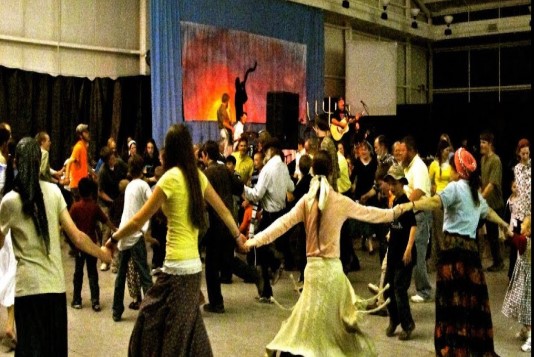
As you can see, the Davidic dancing is done in the round; male and female, young and old, all participate in one dance, one idea, and one voice of praise and worship. Ask any musician who has led such dancing; it is a beautiful thing to behold.
Now, given that we have evidence of the dance being present since the time of the grandsons of Yahudah, take a look at the ancient structure below:
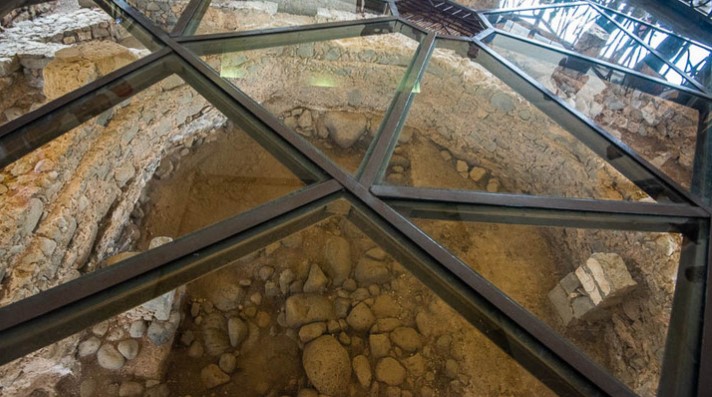
You can see a building built in the round. This ruin is found in the village of Kapher-Nachum – Capernaum. According to the archeologists, this is the house of “St. Peter”. Of course, it isn’t. These are the houses in Capernaum:
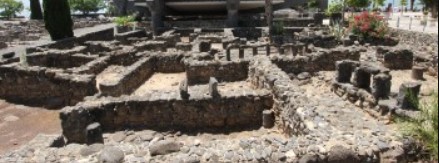
The so-called house of Peter is actually the original synagogue of Kapher-Nachum, the place where the Mashiach preached. The place that is called the synagogue in this place is actually a third century Roman structure.
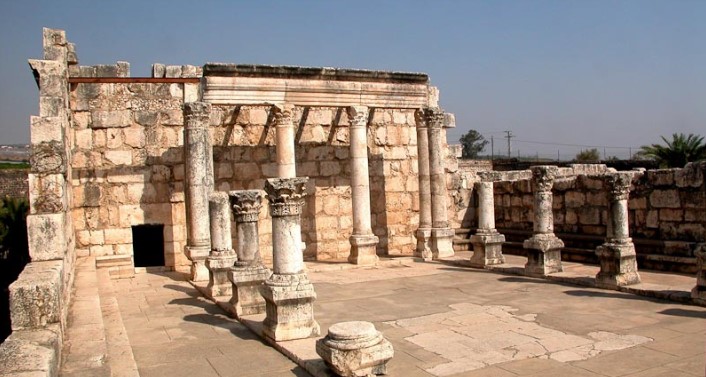
Consider the artifact that is considered to be the foundation of the ancient synagogue found in Corinth (the place where Pa’al spent time, and to whom he wrote two letters). Below is an aerial photo of the Greek section of ancient Corinth, and the circular foundation is believed to be the synagogue (a sign with ancient Ivriyt was found at this site).
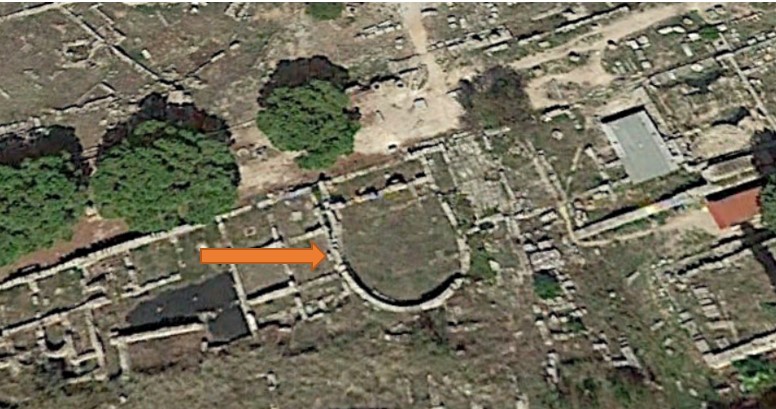
Why is the synagogue round? Was the ancient synagogue a place where Davidic (Qodesh) dancing took place? Dancing in the round? And who were the sons of the Round Dance? None other than the sons of Zerach!